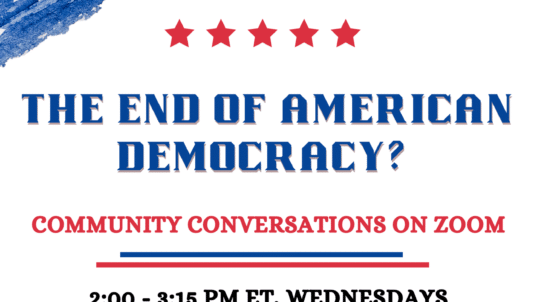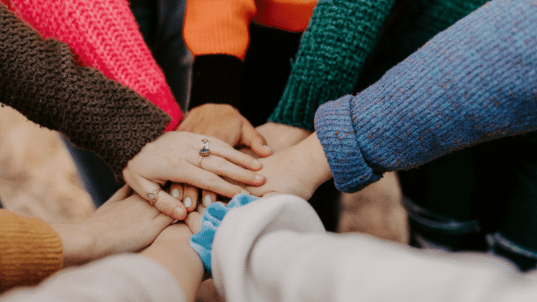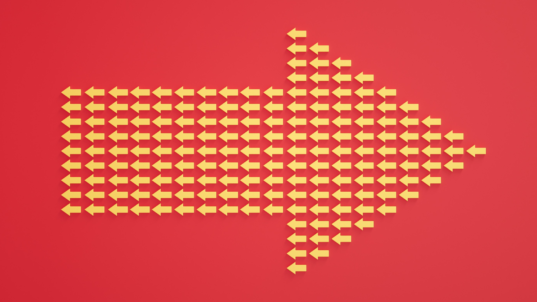
Photo by Arisa Chatassa on Unsplash
Sports for all of life, and for the life of all
Sports and fitness activities can play an important role in boosting health and to promote healthier communities overall. This topic was a dimension of sports and fitness activities uncovered in the first of our four-part Community Conversations on the Future of Sports and Fitness–and it was the central topic for our second conversation. You’ll find a summary of the second conversation below (and more on this topic from an earlier discussion project). In short, we were exploring “sports for all of our lives” in the rich sense of:
- Sports for all lifelong–and for the lives of all community members
- Sports for boosting our lives, our vitality and health, as individuals
- Sports for boosting the vitality and health of our communities (whether in terms of civic health or public health).
Our next session on November 12, 2020 (1:00-2:15 pm EST) focuses on Sports and Justice (register here). A sense of fair play, of having a level playing field, has always been essential for sports. So what if leveling the playing field in society can start by leveling the playing field in sports? We’ll explore…
- What role could, or should, sports and fitness activities have in making us a more just society?
- How might we connect sports and social progress?
- What should be our policies be for athlete activism?
We hope you’ll join us for this exploratory conversation. If you’re interested in a warm-up, you might check out some of ideas on empowering athletes from an earlier discussion project. This Community Conversation series is part of an ongoing collaboration with IONA Senior Services, who are handling the registration for the series.
Sports and fitness activities for individual wellbeing
- Boost physical and psychological health through active participation (a sound mind in a sound body)
- Mood boosting and stress relieving
- Developing character, resilience (in the face of losses and challenges), and team spirit
- Increase energy, prevent diseases, slow the effects of aging
- Different sports for different times of our lives as our bodies change
- Goals might change throughout our lives (e.g. from competition to staying fit)
- Possible shift of focus to functional goals as we age: mobility, heart health, mental sharpness, etc.
- Goals vary by person: some want cooperative or non-competitive sports, others always want competition
- Shared sports or fitness activities as a way to make social connections that are vital to a sense of wellbeing (a thing we do with friends—or as a way to become friends)
- Many sports can bring us outdoors, which is beneficial for our mood
- Sports can also threaten our physical and psychological wellbeing
- Risk of physical injury, which can lead to chronic health problems and even death
- Risk of psychological injury, such as from bullying, often targeted on underperforming individuals or on enforcing gender norms
- The drive of elite athletes to be exceptional can put them at greater risk for injury and death
- The drive of elite athletes to be exceptional can lead to profound social isolation, putting them at greater risk for psychological injury
Sports for community wellbeing
- Playing sports together fosters a sense of social connection
- The more people who participate in sports and fitness activities, the greater the public health outcomes will be
- An inclusive approach of sports for all (for all ages, all economic and ability statuses) would mean greater health benefits across all populations, and overall greater public health outcomes
- Watching sports together fosters a sense of social connection and reinforces community identity
- Sports draw communities together, offering positive shared community experiences
- Sports can mediate a positive sense of shared culture and local or national identity
What would it look like if we embraced “sports for life”? We might…
- Invest public money in sports and fitness infrastructure for all community members (and not on a commercial basis)
- Have community-based sports and fitness centers with no- or low-cost access to facilities and classes for all—and all ages
- Open up streets for more than cars: dedicated walking paths and bike lanes
- Community parks with recreation and sports spaces
- Take a targeted approach to meet the sports and fitness needs for different ages and different ability statuses
- Create dedicated infrastructure where people can participate safely at any age (don’t mix age groups or mix bikers and walkers where it might cause injury)
- Open up existing sports infrastructure (e.g. schools) for use by the whole community
- Be inclusive: make sure every ability status is included, providing opportunities for adaptive sports
- Create programs to encourage ongoing sports and fitness participation by adults and seniors, whether for competitive or recreational sports
- Encourage and enable sports sampling, so people can find a sport that is for them—or for their time of life
- Use the media to shine a light on sports at all ages, to encourage adults and seniors to stay active
- Foster a culture of “everyone plays”—a shared expectation that everyone, at any age, can and should participate in sports and fitness activities, no matter their ability status, and no matter if they have competitive or cooperative interests
- Encourage sports that one can do at any age or as one ages
- Revitalize nationwide fitness awards, like the Presidential Fitness awards, but in a way that is more encouraging for all (not demoralizing)
- Adapt to the local climate and cultural tendencies (winter sports in the north, etc.)
- Create programs to get kids (especially) outdoors and away from electronic devices
- Develop virtual sports capacities (e.g. bike races on stationary bikes) to keep people active when they can’t get outside, like during the pandemic
- Focus on developing personal responsibility and motivation (ultimately it’s up to the individual to just do it)
- Encourage the role of various institutions to motivate sports participation: families, schools, clubs, religious communities
- Make sure parents are good role models for sports and fitness participation
- Boost the role of culture in setting expectations for sports participation and opening up options for staying active



